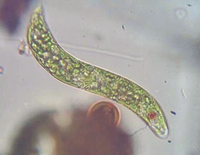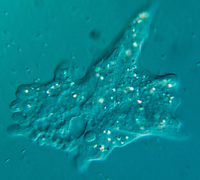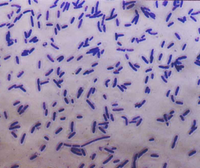Difference between revisions of "Unicellular"
(→Examples) |
|||
| Line 21: | Line 21: | ||
| style="height:20px; width:200px; text-align:left;" |A [[unicellular]] [[organism]] that makes its own food by [[photosynthesis]]. | | style="height:20px; width:200px; text-align:left;" |A [[unicellular]] [[organism]] that makes its own food by [[photosynthesis]]. | ||
| style="height:20px; width:200px; text-align:left;" |A [[unicellular]] [[organism]] that moves using [[pseudopodia]]. | | style="height:20px; width:200px; text-align:left;" |A [[unicellular]] [[organism]] that moves using [[pseudopodia]]. | ||
| − | | style="height:20px; width:200px; text-align:left;" |A [[unicellular]] [[organism]] that includes diseases like | + | | style="height:20px; width:200px; text-align:left;" |A [[unicellular]] [[organism]] that includes diseases like cholera and [[E.coli]]. |
|} | |} | ||
Latest revision as of 09:15, 8 April 2019
Key Stage 3
Meaning
A unicellular organism is a living thing made of only one cell.
About Unicellular Organisms
- There are millions of unicellular organisms living on our skin and in our intestines.
- Unicellular organisms can be found in all rivers, lakes, seas and even in raindrops.
Examples
| Euglena | Amoeba | Bacteria |
| A unicellular organism that makes its own food by photosynthesis. | A unicellular organism that moves using pseudopodia. | A unicellular organism that includes diseases like cholera and E.coli. |


